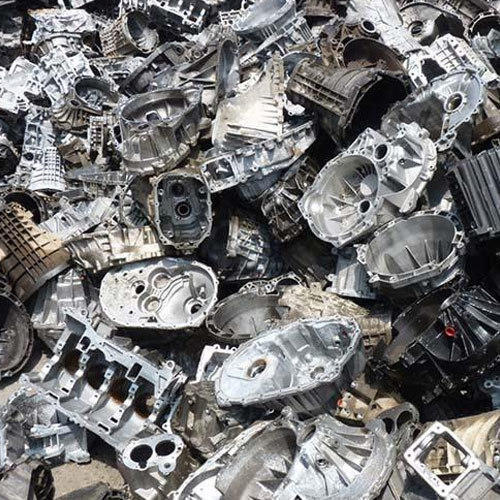The Role of Automobiles for the Future of Aluminum Recycling
For well over a century, aluminium recycling has been employed in the production of automobiles. Aluminium took nearly 60 years to become widely employed in the auto industry due to initial problems in metalworking with aluminium and its high price at the time.
Aluminium is now the second most often utilized material in the vehicle industry, after steel. In the production process, 1 kg of aluminium is thought to be able to replace up to 2 kg of steel or cast iron.
The use of aluminium in the automotive industry is increasing. The material can save up to 50% of the weight of comparable materials, making it an appealing option for OEMs aiming to enhance their vehicles’ fuel efficiency by reducing weight.
This is significant since global fuel economy regulations are becoming more rigorous. But with the use of aluminium in modern vehicles, aluminium recycling has also been encouraged and more and more companies around the world have opted to reuse the metal rather than manufacturing it.
Why Is Aluminium Used In Automobiles – Aluminium Recycling
Aluminium is 10 to 40 percent lighter than steel on average, depending on the product. Aluminium vehicles perform better in terms of acceleration, braking, and handling. Also, aluminium’s stiffness gives drivers more rapid and precise control.
Aluminium’s malleability allows designers to create vehicle forms that are optimized for maximum performance. When compared to steel, aluminium can absorb twice as much energy in a crash.
Aluminium can be utilized to expand the size and energy absorption capacity of a vehicle’s front and rear crumple zones, improving safety while reducing weight. Lighter aluminium vehicles have shorter stopping distances, which helps to avoid collisions.
The usage of aluminium is also backed up by environmental benefits as almost all aluminium scrap from automobiles is salvaged and recycled. One ton of aluminium recycled saves the energy equivalent of 21 barrels of oil.
When compared to steel, aluminium auto manufacturing has a 20 percent lower lifespan CO2 footprint. Aluminium-component vehicles can be up to 24% lighter than steel-component vehicles.
This saves 2.6 liters of fuel per 160km, which is a 15% reduction in fuel usage compared to steel automobiles. When aluminium is employed in hybrids, diesel, and electric vehicles, similar fuel savings are achieved.
Finally, vehicles with aluminium components require less rust repair and have a longer lifespan. Aluminium components are appropriate for vehicles that operate in difficult situations, such as off-road and military vehicles.
It’s safe to say that, as long as human lives are reliant upon automobiles, aluminium will always be in demand and hence encouraging aluminium recycling.
Automobile In Aluminium Recycling
Because of its consumer and environmental benefits, aluminium use in vehicles and trucks continues to rise and has shown constant growth over the last few years.
Automakers can use recycled aluminium to increase the sustainability of their operations and products while also securing their supply chains. aluminium may be recycled indefinitely without deterioration while still having significant economic worth.
As a result, automakers can use closed-loop recycling facilities to access an unlimited supply of aluminium. At every step of an automobile’s existence, aluminium continues to demonstrate its basic worth as a sustainable option.
Aluminium is a significant part of the solution as the globe strives for a more environmentally friendly future, and new data from every single research in this field verifies that. Automobiles have the highest recycling rate of any consumer product.
Approximately 90% of the aluminium in a car is collected and recycled. Although it accounts for less than 10% of the vehicle’s weight, it accounts for approximately half of its scrap value.
When the amount of aluminium recycled from autos is compared to the amount of aluminium utilized to manufacture new automobiles in the same year, the recycling rate for automobiles is about 100 percent.
The Benefits Of Automobile Aluminium Recycling
Aluminium metal extraction from ore is a difficult procedure. To extract ores from mines, metals from ores, and then purify extracted metals, meticulous efforts are required. All of these activities need a significant amount of energy.
The aluminium recycling process, on the other hand, involves shredding the scrap metals, melting them, and purifying them, which is a much simpler procedure. In addition, it consumes less energy.
As a result, finished items created from recycled scrap metal are both cost-effective and energy-efficient in the manufacturing process. The roasting of ores, crushing and purifying of ores, as well as the bombing of severe environments to make tunnels for mine, produce a variety of nasty gases.
When coal is used for heating, the amount of carbon dioxide and carbon monoxide released is significantly higher. And carbon emissions of this magnitude have a direct impact on climate change.
At the same time, these carbon compounds contribute to dangerous air pollution and can make it difficult for residents to breathe. According to some estimates, aluminium recycling can reduce greenhouse gas emissions by up to 500 million tons.
Furthermore, recycling scrap aluminium and other scrap metals from automobiles contributes to a 97 percent reduction in the output of mining waste.

